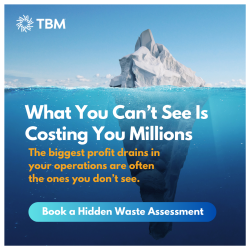Private fund managers considering exits today are working harder than ever to find new ways to increase the value of their assets before parting ways with them.
Given the ongoing market and geopolitical instability, relying on market-driven performance to provide a complementary boost has become increasingly risky. More should consider the value that can be found in striving for sustainable operational excellence, which can improve EBITDA multiples – a key factor in determining the final sale price – considerably.
The Exit Rollercoaster
One key factor exerting pressure on managers is the scarcity of exits. PE exit activity has been highly uneven over the past decade, with a trend line filled with valleys and peaks more closely resembling a volatile technology stock index. Following a strong run from 2019 to 2021, fueled in large part by secondary deals, exits have fallen sharply and the outlook for 2024 is mixed at best. If your firm is in the fortunate position to plan and execute an exit, success depends on pulling every value creation lever you have at your disposal.
Reaping Value from Operational Strength
Operational excellence is seldom thought of as a growth engine, which in today’s business climate means many companies are leaving significant value on the exit table. Strengthening and improving the core aspects of operational flows can add considerable value, in the range of 4% to 10% of additional EBITDA prior to sale.
How? It all comes down to having an organizational mindset centered on improvement, creativity, and determination. Some companies are inherently good at this and continually make smart, value-enhancing ops improvements, but they fly in rarefied air. More often than not, we find management teams tend to be focused on traditional pathways to growth – with a tilt towards product and marketing-led initiatives – and have difficulty envisioning their operations being EBITDA catalysts.
“Sometimes you get shown the light, in the strangest of places if you look at it right…”
– Robert Hunter
The OpEx Value Creation Toolbox
There are many ways to institutionalize operational excellence. Firms that do it well often have in-house kaizen/Continuous Improvement (CI) teams focused on problem solving and value enhancement. Some may have small or insufficiently trained CI teams and may seek a complementary relationship with an outside expert. There are also situations where companies are starting from scratch, may have complex needs – for example, multiple plants that need to be more connected – and they simply do not have the knowledge or resources on hand necessary to move forward.
In these cases, companies need more holistic, all-encompassing solutions, which often means deploying a new Management System (MS) to serve as the organizational “headquarters” for a dynamic, sustainable operational excellence program. Some of the value-enhancing levers within management systems companies can pull include:
- Visual factory improvements (5S)
Think of 5S as operational curb appeal. This five-step lean process (sort, straighten, shine, standardize, sustain) aims specifically at making factory floors more organized and visually appealing. Disparate set-ups are a turn-off to buyers, who like to be able to walk onto a floor and immediately see how all the pieces work together seamlessly.
- Leadership standards
Ideally, we want all leaders within an organization to espouse the same best practices at work; to essentially walk the same path and not go rogue. A good MS lays out the best practices and frequencies leaders are required to follow – such as site visits, problem solving, measuring performance, etc. – and holds them accountable each day.
- Streamlining design costs
Examining a company’s design process is a major focus early in the diagnostic phase. Whatever the product, the decisions made when building the design parameters are critical as costs get locked in and can account for up to 70%-80% of total product costs. Every company, depending on the products they produce, has their own unique productivity measures. These could be units produced per week, per day, or per hour. We worked with a fire truck manufacturer, for example, where one unit per day was the goal. We also work with high-velocity manufacturing processes. In both cases, the idea is to look for where the little traffic jams are happening in the process. Where are things getting clogged up and blocking better throughput? Many times, the bottlenecks create an opportunity to make the design process more standardized. In glass manufacturing, for instance, the first thing we look at is the efficiency of the furnaces being used. We worked with one firm that had thirty-six sites and more than fifty different furnaces, making for quite the jigsaw puzzle. Through detailed analyses of all the units, we were able to help them generate extra throughput that delivered an additional $14 million in value to the bottom line.
- Progress and goal tracking (KPIs)
The key performance indicators (KPIs) housed within the MS generally focus on safety, quality, delivery, and cost, and are cascaded down from the top floor to the plant leaders to the divisional heads to the managers to the shop floor. This ensures that everything is integrated and working together, which is critical for accurate measurement. We have seen time and again how more effective management systems can deliver the dual benefit of increasing EBITDA and helping companies learn how to build and sustain their operational excellence muscles. Even companies that feel primed for exit and are content with their valuations can find more meat on the bone. We recently worked with a company, for example, which had done all the prep work and was sitting in the 28-29% EBITDA range. After doing a deep diagnostic, we felt confident we could help them get up to the low 30’s, which we ultimately did.
Commitment, Discipline, Patience
Rather than rushing headlong to exits, PE managers that take the time and commit to engaging with their portfolio companies on operational improvement can put themselves in position to increase EBITDA multiples by 5% to 10%, driving up the value of that exit considerably. While not the most scintillating of growth drivers, growth is growth, and the gains are often more substantial than companies expect.






